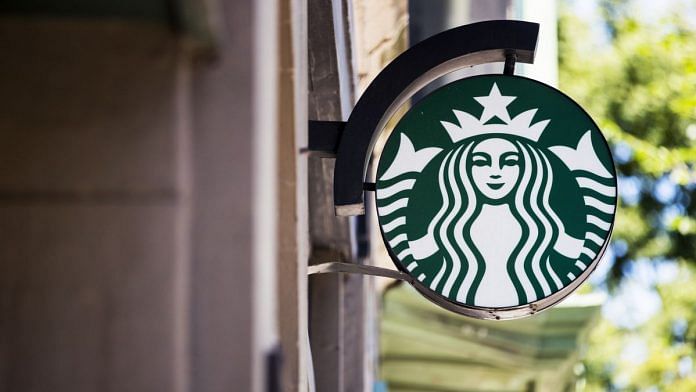How worried should we be about Starbucks’s recent announcement that it plans to begin testing a new type of store that only takes orders via mobile app — no cashiers?
At first glance the image seems vaguely dystopian: person after person filing through, inevitably wearing AirPods, to pick up caffeine-and-sugar infusions they ordered by pressing a few buttons on their smartphones as they were leaving home — all without a moment of human interaction.
But that’s more or less what’s happening right now at regular Starbucks stores: the company already accepts mobile orders, and has more than 16 million mobile users. The drawback is that those users crowd the stores and cause bottlenecks at peak times; in some outlets, the glut of mobile orders has gotten so bad that it’s discouraging walk-in customers. Thus, the mobile-only store model is presumably a response to problems already created by mobile ordering.
Experiments of this kind are increasingly common. Amazon Go stores are cashier-less. Some grocery stores let you scan items as you pick them up and economize on checkout time. And mobile ordering is becoming widespread for foods ranging from salad to lobster. So we might not be too far away from the day when mobile ordering and cashier-less purchasing are the norm, rather than the exception.
Will we be better off for it?
In Starbucks’s case, at least, mobile-only stores might actually work out well for customers. Those who want to order via mobile will be able to go to specialized stores optimized for handling them. And that will reduce congestion at other stores, meaning that people there won’t have to spend as much time waiting for their drinks.
As with many forms of product differentiation, the change might even increase demand for Starbucks coffee. Anyone who previously found Starbucks too time-consuming to stop in during their morning commutes will have a new, faster option. And people who had been driven off by the throngs of mobile-order customers might be able to come back.
It’s less clear, however, how mobile-only stores will affect Starbucks employees.
Some activists are trying to push for laws that would put limits on the shift to cashier-less shopping, requiring that stores must have humans on hand to ring up customer orders. That’s an onerous proposal — analogous to saying that every ATM should also have a bank teller on hand.
But still, you can see why there’s concern. Presumably, cashier-less stores will need fewer employees, even if they do pull in a large number of new customers. And reducing congestion in regular Starbucks stores might reduce staffing needs there as well.
Then there’s the drudgery factor: Working in a mobile-only store will surely be a lot more monotonous, more like being employed on a factory assembly line than in a typical coffee shop, where give-and-take between workers and customers can be part of the appeal. There will be less human interaction – and what interactions there are might well be with upset customers.
It’s also likely that the workers at mobile-only stores won’t make nearly as much in tips. First off, customers might not feel an obligation to employees they don’t interact with personally. Moreover, tipping using an app isn’t observable to others, and there’s solid evidence that people take prosocial actions more frequently when others are watching. In other words, people tend to tip more when they know they’re being observed.
That said, the Starbucks app’s default tipping options are on the order of 10% to 20% — higher than many people give with the typical change-in-jar approach. So if Starbucks pushes app tipping hard with notifications and alerts, there might not be too much of a shortfall. Better would be to still have a physical tip jar in mobile stores — or even to place a star on the order display board next to the name of anyone who tips.
So there’s a chance that mobile-only Starbucks might be beneficial overall, rather than dystopian. Or at least not as dystopian as the pumpkin-spice latte. – Bloomberg
Also read: Facebook wants to read your mind & Elon Musk wants to go even further



